Gagarin to Gaganyaan: India’s Russian-trained astronauts are gearing up to lift off for the giant’s first manned space mission
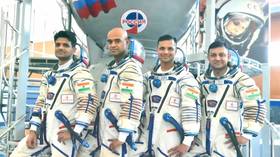
It was the best-kept secret at the Indian Institute of Science (IISc), the alma mater of some of India’s most renowned scientists, located in the country’s tech capital, Bengaluru.
For two years or more, Indian Air Force (IAF) test pilots Group Captain Prasanth Balakrishnan Nair, Group Captain Ajit Krishnan, Group Captain Angad Pratap, and Wing Commander Shubhanshu Shukla slipped into multiple laboratories, attended experiments, and listened attentively to lectures by young faculty members.
Others on campus did not know their identity or mission. They even kept a low profile when they socialized with faculty and families in the neighborhood where the institute is located.
On February 27, Prime Minister Narendra Modi announced the selection of the four to travel aboard the country’s first manned space mission, Gaganyaan. They are scheduled to blast off sometime in 2024 or 2025. Modi, who introduced the astronauts at the Vikram Sarabhai Space Center in the southern Indian state of Kerala, lauded the ”remarkable day” for the nation’s space sector.
They began training at Russia’s Gagarin Research & Test Cosmonaut Training Center in February 2020. This followed a 2019 agreement between India and Russia on selection, support, medical examination and space training of Indian astronauts. They were trained for abnormal landings in various terrains, including forests, rivers, and seas. Their stay in Russia was an extended one, due to the spread of the Covid-19 pandemic.
New Delhi’s space cooperation with Moscow is not new. The sole Indian to journey into outer space, Group Captain Rakesh Sharma (retired), once trained in the Soviet Union. ”It’s part of an ongoing process, so there’s nothing much to comment about,” he told RT. ”They went to Russia like I did for training, and the training process will continue.”
Sharma flew to the Salyut 7 Space Station on board Soyuz-11 and spent almost eight days there in 1984.
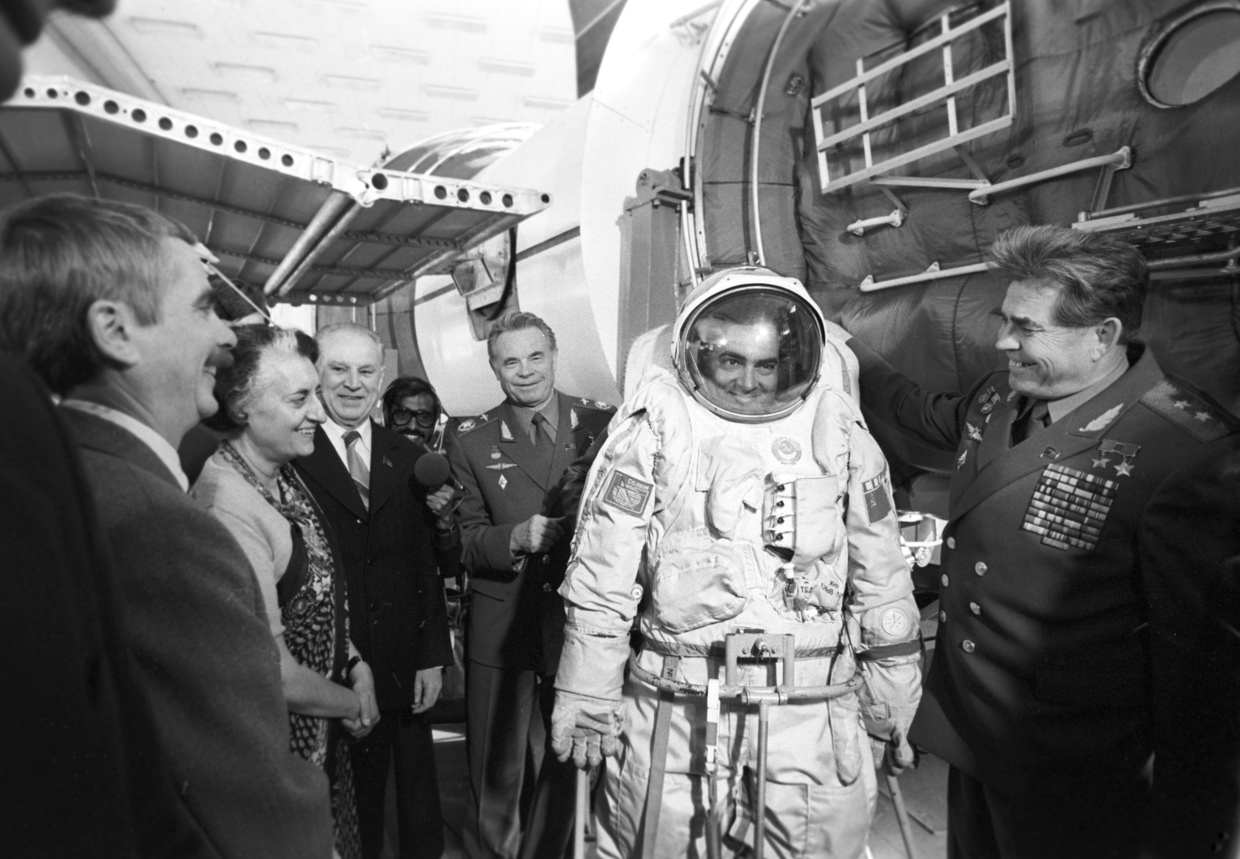
In order to take space cooperation with Russia to the next level, India signed a second bilateral agreement in July 2023 to select and train astronauts for the Gaganyaan program, with a budget of over $1.31 billion. This agreement establishes a technical liaison unit of the Indian Space Research Organization (ISRO) in Moscow with the task of realizing Gaganyaan and other projects, through collaboration with the space agencies of Russia and neighboring countries (ISRO also would have such offices in Washington and Paris).
Russia’s continued support of ISRO from its nascent days has been summed up best by Dr. K. Kasturirangan, former chairman of ISRO, in his book ‘Space and Beyond’: ”The cooperation with the Soviet Union (and later with Russia) covered a varied range, including launches of India’s first satellite (Aryabhata) and subsequent experimental satellites (Bhaskara-I and Bhaskara-2); the orbit of India’s operational satellites (IRS-IA, IB and IC); supply of satellite equipment like solar panels, batteries, and the cold-gas control propulsion system (for Aryabhata); the space-flight opportunity for the first Indian astronaut (Wing Commander Rakesh Sharma); and the supply of cryogenic stages for the Geostationary Satellite Launch Vehicle (GSLV).”
The anecdotes in Kasturirangan’s book include one about Sergey Korolev, the pioneer of the Russian space program.
“Academician Korolev was superstitious and opposed launches on Mondays. He always carried two one-kopek coins (the lowest denomination of the Soviet and Russian currencies) in his pocket as a talisman whenever he went to witness a launch. He was distressed when he could not find them on the day he was hospitalized in January 1966; sadly, he died of a heart attack during the surgery,” one such story reads.
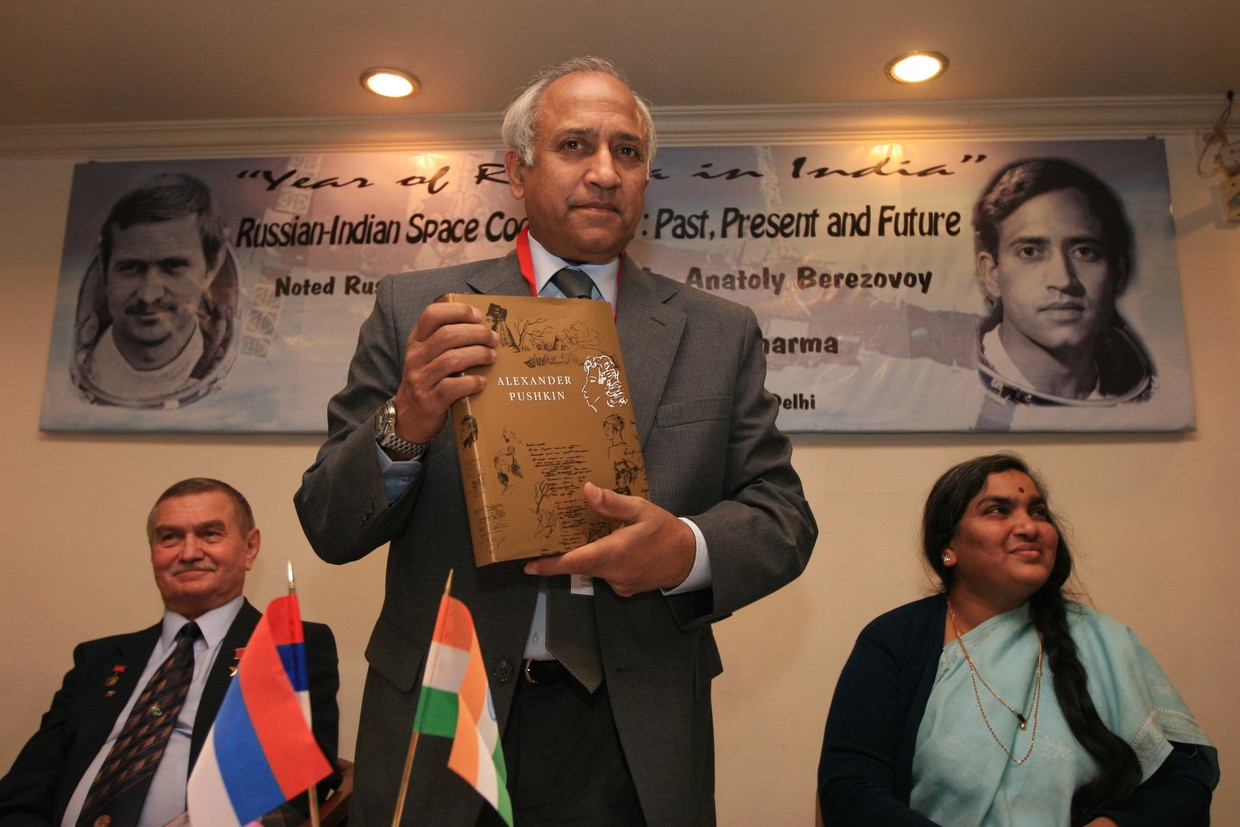
The select few
Of the four pilots introduced as the nation’s ‘vyamonauts’ (‘vyamo’ is Sanskrit for space; ‘nauts’ is Greek for sailors) by the Indian PM, two will set off on a two-day voyage, circling the Earth at an altitude of about 400km.
The Gaganyaan mission was formally announced by Modi during his Independence Day address on August 15, 2018. In Sanskrit, ‘gagana’ means celestial, and ‘yana’ means craft or vehicle. The mission took root in 2007-08, when the first tranche of $7 million (of a $1.77 billion budget) was released to support preliminary studies on the voyage into space by Indians on board an Indian rocket. Only three countries – the Soviet Union, the United States, and China – have so far achieved the feat of catapulting humans into space aboard their own spacecraft.
In 2009, the ISRO signed an agreement with the Indian Air Force (IAF) Institute of Aerospace Medicine to conduct preliminary research on the psychological and physiological requirements of crew and the development of training facilities. The institute played a crucial role in determining astronaut training, crew capsule design, and several control and environmental systems as per psychological and physiological needs.
A year later, in December 2019, four ace IAF test pilots were chosen from among thousands of applicants for the voyage into space.
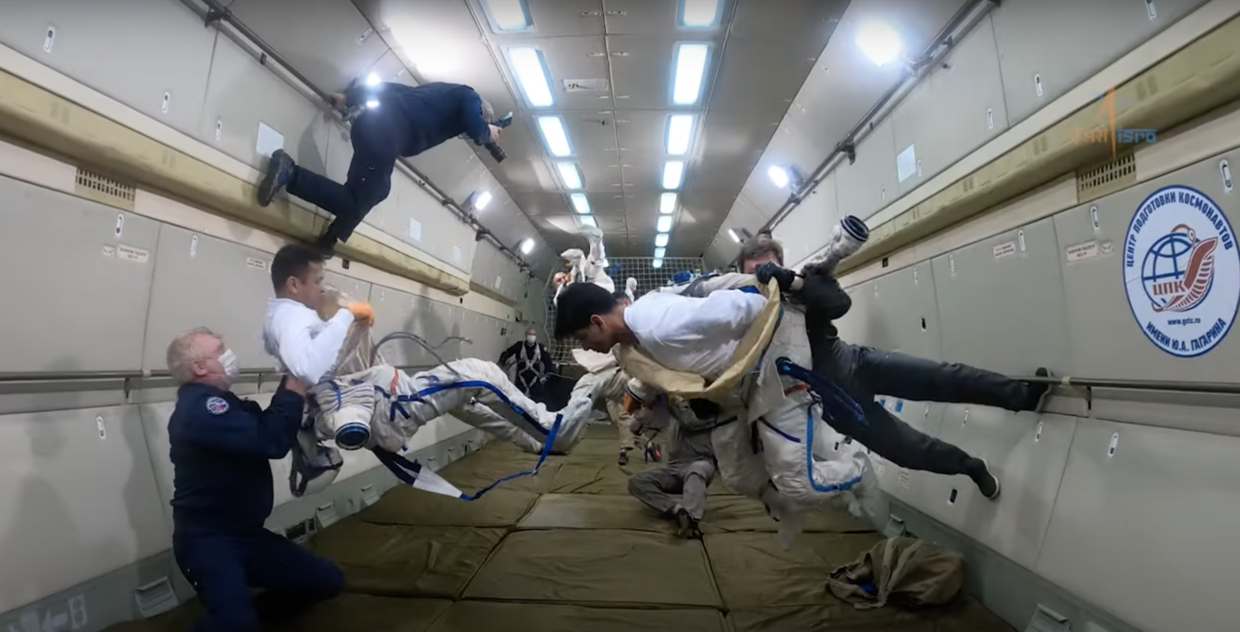
Group Captain Prasanth Balakrishnan Nair is the senior test pilot among the four. Born in Thiruvazhiyad, Kerala on August 26, 1976, Nair is a Cat A Flying Instructor and a test pilot with approximately 3,000 hours of flying experience. He commanded a Su-30 MKI squadron in Tezpur and carried out the first test firing of a long-range Brahmos missile from this combat jet off the coast of West Bengal.
In June 2018, he and Squadron Leader L. Biswal, flight test engineer, survived a Su-30MKI crash near Pune. Both ejected as the combat jet developed a snag a few minutes after takeoff from an airfield belonging to Hindustan Aeronautics in Ozar near Nashik.
The son of a retired IAF sergeant, Group Captain Ajit Krishnan, born in Chennai on April 19, 1982, was decorated early in his career, having won the President’s Gold Medal and Sword of Honor at the Air Force Academy. He was commissioned on June 21, 2003, in the IAF’s fighter stream. An alumnus of the National Defense Academy (NDA), he is the second most experienced pilot after Group Captain Nair. He has logged about 2,900 hours of flying and worked as a flying instructor and a test pilot.
Born in Prayagraj, Uttar Pradesh, on July 17, 1982, Group Captain Angad Pratap, 42, is a flying instructor and a test pilot with approximately 2,000 hours of flying experience. He was commissioned on December 18, 2004 in the IAF after graduating from the NDA.
Wing Commander Shubhanshu Shukla is a fighter combat leader and a test pilot with approximately 2,000 hours of flying experience. Born in Lucknow on October 10, 1985, he went to the NDA and was commissioned by the IAF on June 17, 2006.
All four pilots have flown various fighter and transport aircraft, including the Su-30 MKI, MiG-21, MiG-29, Jaguar, Hawk, Dornier, and An-32. All four also graduated from the Aircraft and Systems Testing Establishment (ASTE), Bengaluru, and joined the IISc’s MTech as part of a secret agreement with ISRO to prepare for the proposed space flight.
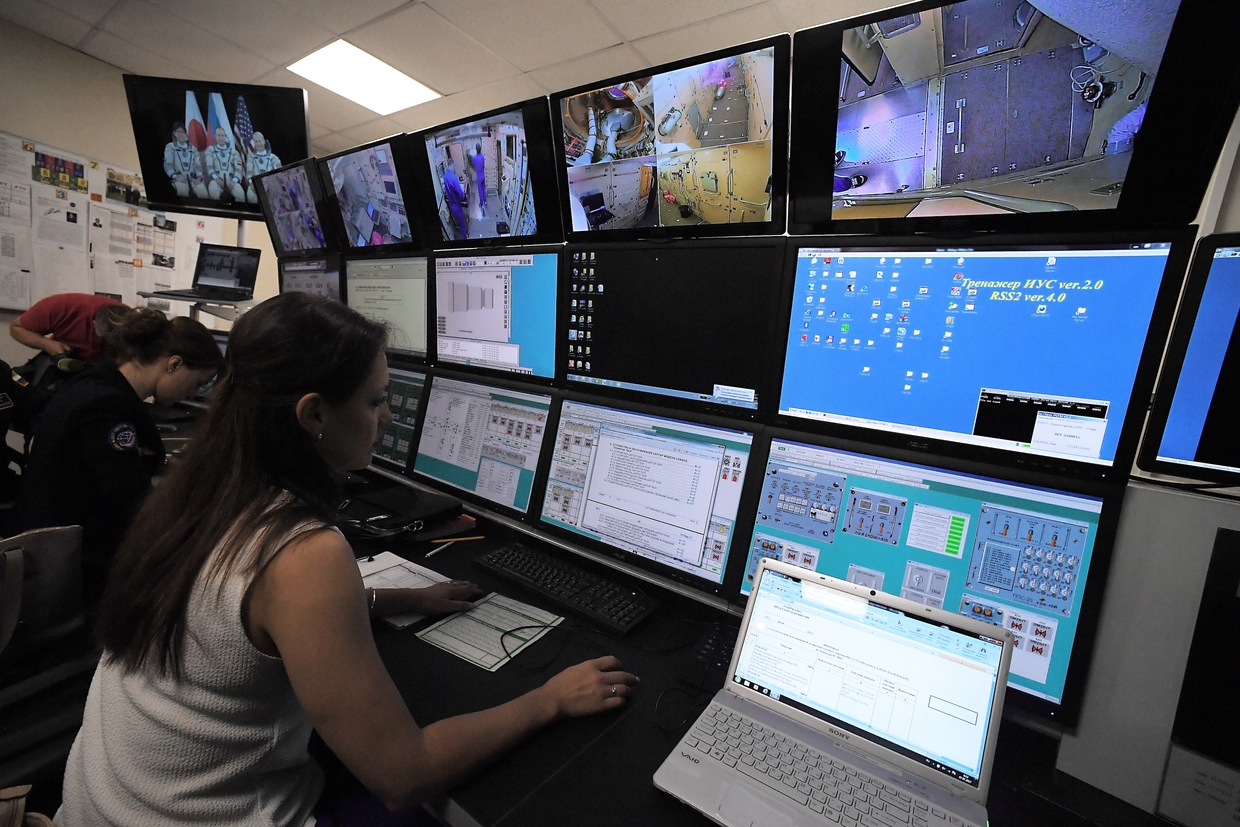
Star syllabus
The crew’s lectures were held both in an outside the ISRO’s Astronaut Training Facility on the outskirts of Bengaluru. Besides theory classes, they were provided training in flight systems, micro-gravity, aero-medical practice, recovery and survival, and mastery of flight procedures. Their syllabus was unique, with the course content tailored by ISRO-IISc to make astronauts out of pilots.
“All of them are test pilots who know everything about aircraft engines but did not know much about rockets or the different types of engines, including a cryogenic engine, that power a launch vehicle (rocket) during different phases of this mission. Critical parameters like performance, functioning, and control of the engines were demonstrated to them through calculations,” Prof. Joseph Mathew, chairman of the Department of Aerospace Engineering, IISc, told RT.
Prof. Mathew said similar training was provided on orbital mechanisms, which are vital for the crew capsule during its orbit around the Earth.
“The crew must know how to take control (from automated to manual) during the re-entry (into Earth’s atmosphere at the last stage of the mission) phase when a radio blackout occurs, and the capsule has to endure excessive heating,” he said. “This was also part of the syllabus drawn up jointly by ISRO and IISc.”
Another senior member of the faculty at the Aerospace Engineering department, who chose to remain anonymous, said some of his colleagues had acknowledged their role in the training program since Tuesday.
“Some of our colleagues have shared pictures (On WhatsApp) to indicate their presence at the wedding of Group Captain Nair and (Malayalam film actor) Lena after she announced their wedding on social media. Now, we know who they were walking around with on the campus,” he added.
Mission on
For the flight, which is likely to take place in 2025, three years behind the original 2022 scheduled date, the ISRO will reconfigure its three-stage medium-lift rocket – Launch Vehicle Mark-3 or LVM3 (known formerly as GSLV Mark-3) – to meet human rating requirements and label it as ‘Human Rated LVM3’, or HLVM3. It will be similar to the rocket that launched the lunar missions Chandrayaan-2 and Chandrayaan-3, among others.
The orbital module, comprising a crew module (with seats and controls) and a service module, will ride atop this reconfigured rocket.
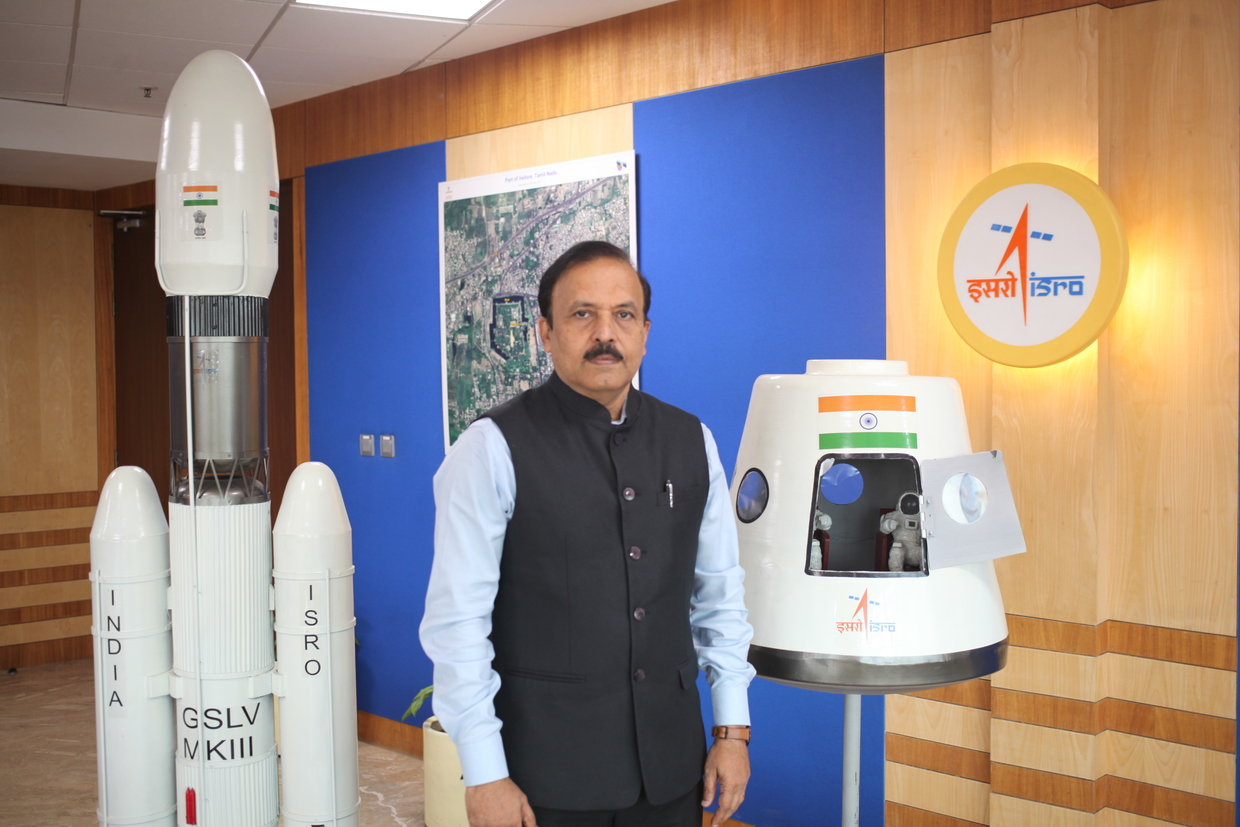
Two pilots of the four introduced on Tuesday will set off on a two-day voyage, circling the Earth at about 400km. During the two-day outing, they will carry out five experiments the instruments for which were designed by the Indian Institute of Space Science and Technology (Thiruvananthapuram), IIT (Patna), the Tata Institute for Fundamental Research (TIFR), Jawaharlal Nehru Centre for Advanced Scientific Research (JNCASR) in Bengaluru, and the Indian Institute of Chemical Technology (IICT), respectively.
As a precursor, the ISRO plans to launch a crewless test flight, Gaganyaan-1, later this year. It will carry onboard ‘Vyommitra’ (space friend), a ‘female’ robotic astronaut with motorized hands and arms that will help test how a human would fare aboard Gaganyaan without risking any lives. Another crewless test flight will follow late in 2024.
To return to Kasturirangan’s recounting of Indo-Russian space cooperation, he quotes President Vladimir Putin: “Thank God, this field of activity is not being influenced by problems in politics. Therefore, I hope that everything will develop, since it is in the interests of everyone... This is a sphere that unites people. I hope it will continue to be this way.”












